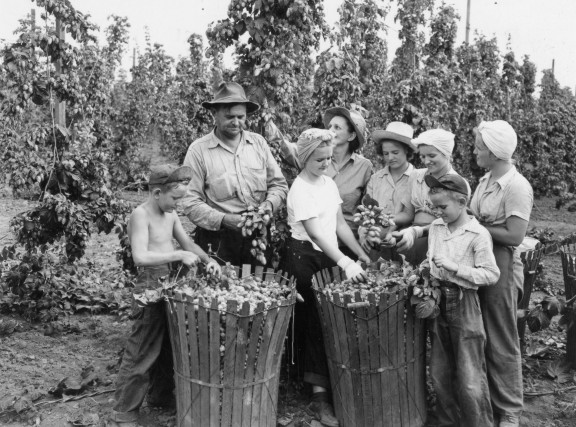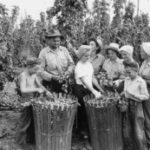Emil Clemens Horst, a pivotal figure in the American hops industry, established Horst’s Hops Ranch in the mid-1880s along the Bear River near Wheatland, California, and later expanded to include a significant operation in the Campus Commons area of Sacramento. Horst, a German immigrant who arrived in the United States in 1871, began with a modest plot of land and quickly grew his enterprise by acquiring the operations of two other hop growers, Hugh Roddan and Joseph M.C. Jasper. By 1898, his ranch had become a major operation, employing thousands of migrant workers during harvest season and supporting a company town complete with its own post office. The ranch’s significance was such that certain loamy floodplain soils in the area were named after Horst, reflecting its impact on the region’s agricultural landscape.

Horst revolutionized hop production with his invention of the mechanical hop separator, patented in 1909 in Elk Grove, California. This machine efficiently separated hops from bines and leaves, drastically reducing the need for manual labor. By 1912, Horst’s operations had expanded to make him the largest hop grower in the world, with offices in Chicago, New York, and London, and he supplied hops as far as the Guinness Brewery in Ireland by 1904. His ranches, including those in Wheatland and Sacramento, were instrumental during California’s hop production peak between 1912 and 1916, when the state was a leading producer in the USA. A 12-minute silent film from 1900–1910, preserved by the Center for Sacramento History, documents the operations at the Campus Commons ranch, showcasing the hop separator, field work in California and Oregon, and the transportation of hop bales via the Oregon Railway and Navigation Company.
Source: Center for Sacramento History. Special thanks to Jay Brooks for sharing this cinematic treasure. Watch the restored footage to step back into hop history!
For Brewing fun facts, trivia, movies and more, Click Here.


















